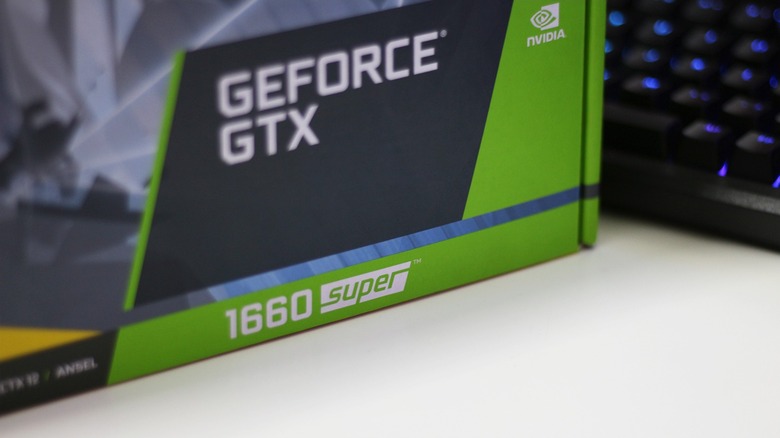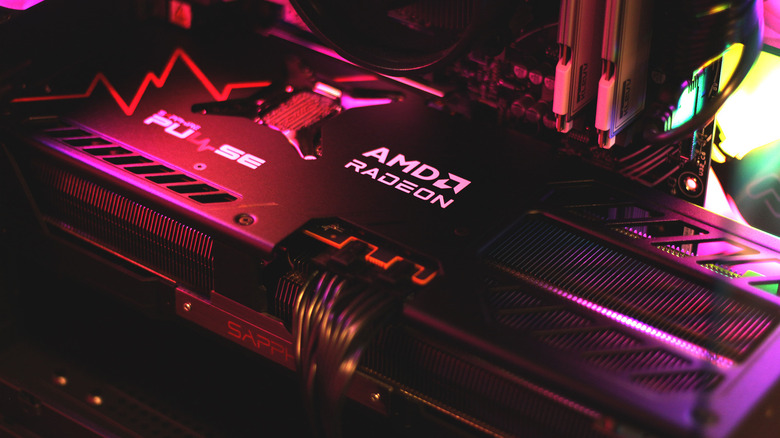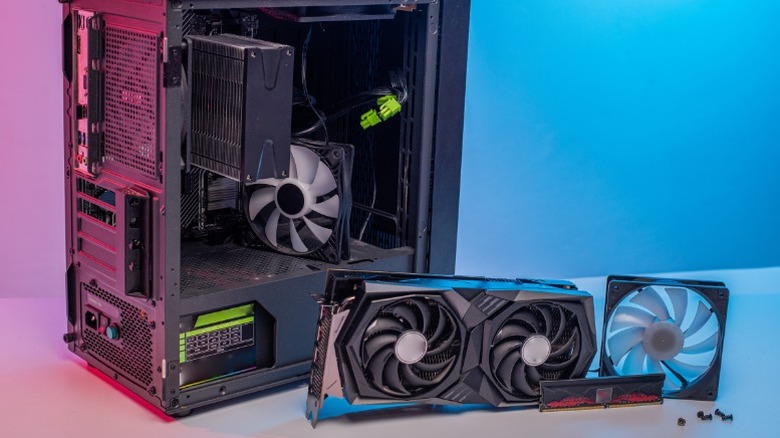The Risks Of Buying 'Used: Like New' PC Parts From Amazon
There are various reputable brands that specialize in building and selling custom gaming PCs, including iBuyPower, Origin PC, and Maingear. Though placing an order and unboxing a finished rig that's ready to go without any tinkering is a great luxury to have, many enthusiasts prefer scoping out parts and building their own computers. This can feel rewarding, but more importantly, you save a considerable amount of money by doing it yourself.
Some of the must-have components for your gaming PC include the right motherboard, graphics card, CPU, and RAM. If you're shopping online, Amazon is a popular destination to pick up parts for a gaming rig. If the budget allows, there's nothing better than ordering in the latest and greatest for your PC — but storefronts on Amazon also list pre-owned or unboxed products that can be had at considerable discounts.
Buying used products can turn out very well — but this requires a decent bit of knowledge and a whole lot of luck. Generally speaking, computer parts like CPUs and motherboards are sensitive components — and although the "Used – Like New" tag suggests that the product, despite its damaged packaging, functions perfectly fine, it falls upon the buyer to stay vigilant of any scam listings or damaged components.
Buying used PC components from Amazon
Unlike buying "Used: Like New" tools on Amazon, PC components are far more complicated in design and aren't as easy to label as being "perfectly functional" with just a brief inspection. For example, Amazon's Resale service might flag an AMD Ryzen CPU with a slightly damaged box as "used: like new" and approve it for sale, but the actual processor might have just one of its many pins bent — rendering it unfit for use as is.
The problem digs deeper with other components like graphics cards, hard drives, and RAM. They may seem perfectly fine from the outside — heck, they might even give you no issues while posting your PC after building it. All could be well until a few hours or days later, when you start running into major performance hiccups — which could be due to several invisible defects in these components.
In the best-case scenario, you receive a computer part in pristine condition that also functions perfectly. The second best-case scenario? You spot a physical defect in a product you buy — which will at least allow you to contact support and get a refund before the return window closes. There have been cases of consumers receiving entirely different GPUs than what they've ordered — and while this may be attributed to issues with logistics, the risk is amplified when shopping in the used marketplace.
Things to check when buying used computer parts
Ensuring you received what you ordered is one of the first things to check when buying used computer parts — be it through Amazon Resale or any other marketplace. CPUs and GPUs have some of the worst nomenclature, so be sure to match the exact model number provided in the listing with the product you've received. Free apps like HWiNFO give you a comprehensive view of the various hardware components in your PC.
It's also highly recommended that you grab a phone and record your unboxing. This can serve as substantial evidence during returns or refunds if things go south when you order a GPU but end up receiving cans of beef ravioli — yes, this has happened. Amazon's customer support is generally helpful in processing requests for returns and refunds, but the crucial thing to look out for is the return window.
As stated previously, used components like SSDs and RAM may work fine for simple operations, but might halt under load. To ensure all components that you've bought work as they should, run stress tests using tools like Cinebench for CPU and Furmark for the graphics card. Also, be sure to verify the small but important things, like checking the speed of your RAM or if every fan you've installed in your case is spinning just fine.


